by Jim Korkis, contributing writer for MousePlanet
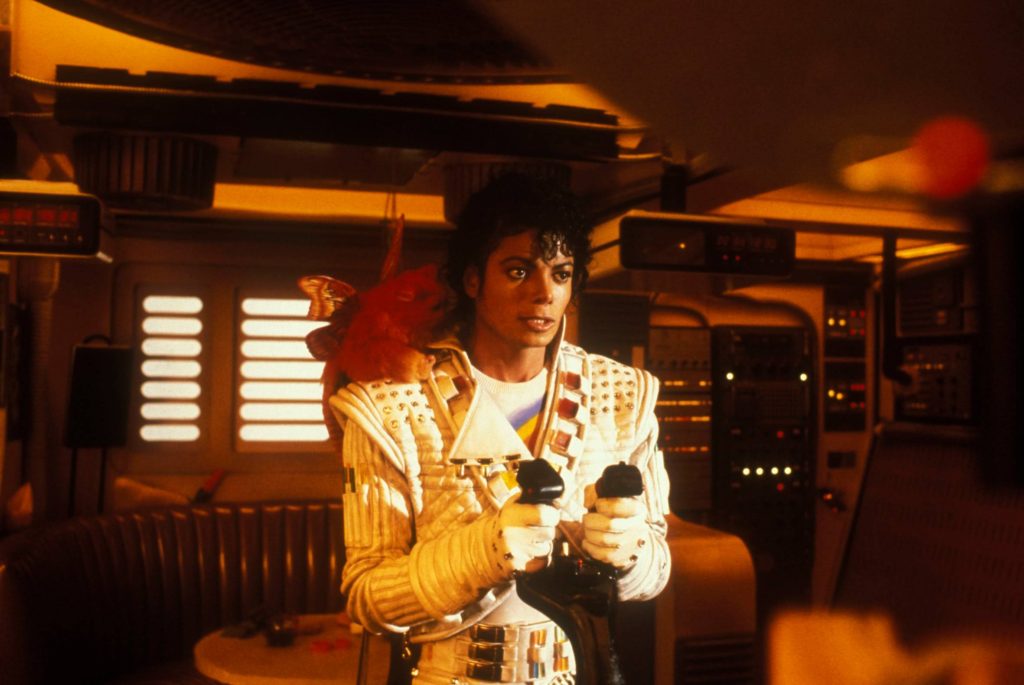
I’ve written about Captain EO before for MousePlanet and that material has been cut and pasted on many different sites over the years including one devoted just to Michael Jackson, usually without citation to me or MousePlanet. It is one of the disadvantages of sharing information on the internet and has prevented others from doing so.
However since writing those pieces, I have learned so much more especially after spending time with Terri Hardin at a Disneyana convention a few years ago and I felt it was time to do a fuller look at this Disney attraction.
Michael Jackson was still enjoying the fame of his hit album Thriller (1983) and the music video of it when his financial adviser, David Geffen, had suggested Jackson make a movie for Disney and contacted his long-time friend, Jeffrey Katzenberg, the new chairman of Disney Studios with the idea. Jackson had expressed interest to Geffen about exploring an acting career.
Soon afterward, Katzenberg took Jackson around the Imagineering facility in Tujunga, California, and opened discussions with him about appearing in a Disneyland attraction.
The Disney Imagineers had prepared a mock-up of a dark ride attraction that would feature Jackson. Supposedly, it was to be in 3-D. Jackson liked the mock-up, but didn’t want to be involved with a ride.
There were also discussions about a 3-D film that might be housed in the Carousel of Progress building. That caught Jackson’s interest. but he insisted that either George Lucas or Steven Spielberg be a part of the project to guarantee its quality and credibility and to “protect” him as he started to explore acting.
Imagineer Rick Rothschild drew up three different storylines. The first had Jackson as a Peter Pan-like character in a magical forest with mythological beasts and fairies. The forest would be threatened by an Ice Queen and Jackson would eventually melt her cold heart with the power of music.
The second proposal had Jackson hiding inside Disneyland after the park had closed for the night and his adventures there, including a dance number with the Audio-Animatronics figures from Pirates of the Caribbean, because he loved that attraction.
However, everyone involved was excited by the third concept, known at the time as Intergalactic Music Man, which evolved into Captain EO. It was only a one-page proposal, barely four paragraphs, and the basic concept was that Michael’s music could heal things in an outer space setting. There was only a short general mention of his crew or the ruler of a planet.
The name EO comes from Eos, the Greek goddess of the dawn. The name was suggested by director Francis Ford Coppola at a meeting in Lucas’ office in San Anselmo in April 1985.
Also in attendance at that meeting among others was Michael Jackson, producer Rusty Lemorande and visual effects technician Harrison Ellenshaw, to all revise and finalize the film’s story.
Ellenshaw remembered: “Francis started to talk about the main character that Michael would play. He didn’t have a name or rank yet. Francis related how the word ‘Eos’ meant ‘dawn and light’ in Greek. And something like that would fit a character who comes to a dark, ugly planet ruled by an ugly evil queen, and change it all with song and dance and magical light beams that transform everything into great beauty. ‘Eos’ was shortened to ‘EO’, and then it was decided to give the character the rank of Captain.”
It was just a quick proposal, not even what might be considered a treatment in the film business, and WDI was tasked with quickly coming up with a budget estimate because Eisner wanted the project fast-tracked. That is one of the reasons the original estimate was only $10 million for a proposed 12-minute film, despite some dissenting voices.
Rothschild became the show director. In addition to many other credits, Rothschild would later head the teams for other Disney 3-D attractions, including Honey, I Shrunk the Audience, It’s Tough To Be A Bug, and Mickey’s PhilharMagic at Walt Disney World.
Steven Spielberg was working on The Color Purple and unavailable to direct the film. John Landis was suggested because of his work directing Jackson in Thriller, but there was concern from some at Disney of not being able to control him because he had a reputation as a maverick and that he would go over budget.
George Lucas was already working closely with the Disney Company on Star Tours and was considering developing other projects for Disneyland’s Tomorrowland.
One proposal he was developing with Imagineer Eddie Sotto was for a space craft to have crashed into the then-empty Carousel of Progress theater and there would be continuing droid battles in the style of traditional fighting matches while the crew were awaiting rescue. The outcome of each match would be determined by the reactions from the audience, and there would be a wide variety of droids.
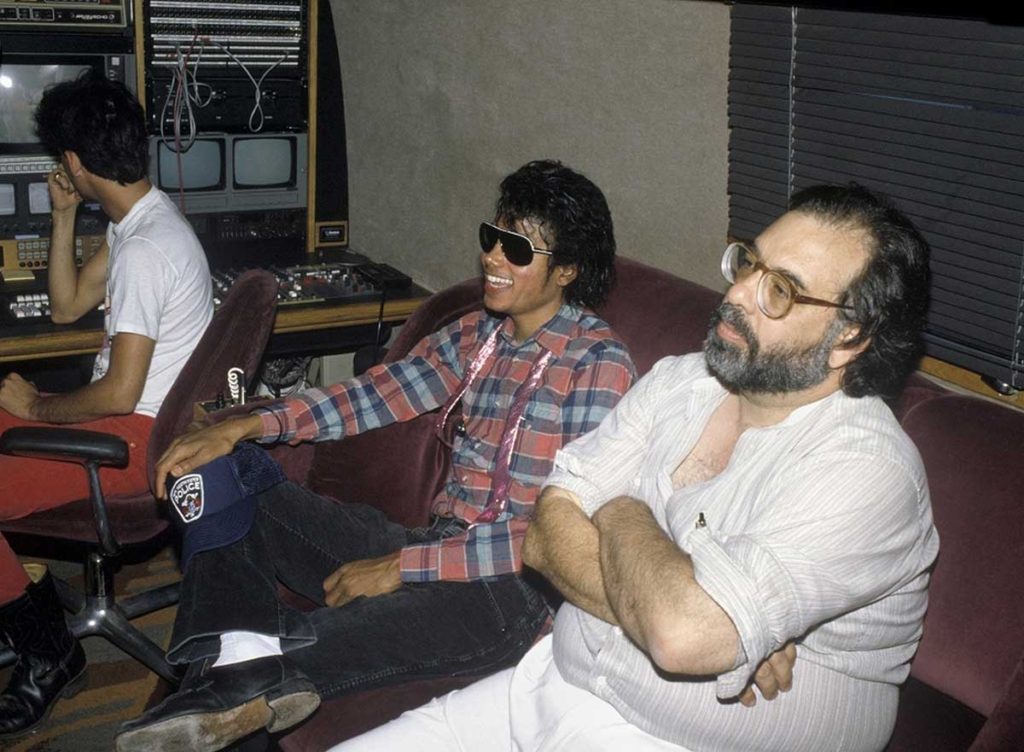
Lucas brought in Francis Ford Coppola, Rusty Lemorande, and Anjelica Huston for Captain EO. Originally, actress Shelley Duvall was to play the evil queen, but she was claustrophobic and couldn’t handle the make-up. Coppola, a longtime friend of Lucas, needed to repair his reputation after the recent box office failure of the Cotton Club (1984) movie, so he was brought on as the director.
Lucas had done the same thing for Spielberg after his disastrous film 1941 and Lucas used his influence to back Spielberg doing Raiders of the Lost Ark.
It was believed at Disney that even though Coppola was the director of record, and would bring some publicity to the project, Lucas would probably step in and do most of the directing, since he seemed excited about the project and was interested in science fantasy.
Coppola had no experience shooting in 3-D, and was learning on the job about necessary lighting and camera set-ups. Lucas backed Coppola completely, even approving extravagant spending on things, like the installation of a giant gimbal unit with elaborate hydraulics underneath that could shake the spaceship set on command. Normally, it would have been the camera that shook to create the illusion.
Coppola recalled: “Michael Jackson had an idea, and George Lucas had an idea, and Disney had an idea. The director was more someone who took all the fragments that everyone thought of and did the best they can. When I first thought about [Captain EO], I didn’t know what sense to make of it.”
Lucas was not on the set a lot because he was involved in so many other projects and was getting frustrated with the typical Disney politics surrounding his projects. Lucas had become used to working independently and not being answerable to others after his Star Wars success. He spent more time on the film in post production than he did during production.
Coppola had a different view of the situation: “Captain EO is like one of those little children’s stereo reel masters that spins while the viewers see beautiful three-dimensional fairy tales making you wish you could just step in and sit down next to the white rabbit. I think it happens like that here.”
There was three weeks of principal photography with Coppola at the helm. When he left, however, the second unit spent nearly six months trying to fill in holes in the story with additional filming to make the entire thing work.
Lemorande, who had produced and scripted a recently released science-fiction-themed film with comedy elements, Electric Dreams, was to script Captain EO with input from Coppola and Lucas. Lemorande had also recently produced the film Yentl, so he would be the on-site producer. He later did un-credited work as a second unit director and film editor. Lucas would be credited as the executive producer.
Lemorande said: “It was a collaborative process where a good deal of the storyline came out of the characters that were already created so really there is no single author to the piece. We were doing some construction at WDI, we were on stages at Laird Studios in Culver City, we had special effects at Disney Studio and at important moments in time we all came together.”
Anjelica Huston, who would win the Oscar for her performance in Prizzi’s Honor (1985) played a spider-like, H.R. Giger Alien-inspired version of the Evil Queen from Disney’s classic Snow White and the Seven Dwarfs, suspended in the air by web-like cables. It was Jackson who suggested those references for the character because he wanted her really scary.
Terri Hardin, who did puppeteering for the film, sometimes stood in for Huston in full costume on the tangled overhead wires while the crew set lighting and staging. In the movie Star Trek: First Contact, the scene where the Borg queen is lowered on wires was inspired by Huston’s similar scene in Captain EO.
During rehearsals, Huston had to sit uncomfortably high on top of a ladder so the proper line of vision for staging could be established.
At the first table reading of the script, Huston had become upset that in the script she was only playing the evil character because she had been promised she would be playing the beautiful queen, as well.
Hardin recalled, “Disney had cast a young [Black] girl to play the princess at the end of the film. Costumes were in production for what Disney hoped would be the love interest for Captain EO. I think if Francis Ford Coppola had his way, he would’ve told her he was going to go with the younger princess and that would be that.
“Disney, however, was worried that Huston may not do the part if she couldn’t play the beautiful princess as well,” she said. “As she was up for an Academy Award, they asked Francis to comply. The actress hired to play the young princess and all her costumes were released and new costumes were created for the new queen, Anjelica Huston. This is how show business works.”
In 2013 when her autobiography was released, Huston was asked about the experience:
“I think the whole thing took about three weeks to shoot. It was a short film about Michael Jackson coming to my ugly hideous planet. I play, of course, a grand high witch … This was solidly in my witch period where I seemed to play every witch on the planet. But he comes to my planet and I’m cruel and evil, he sings to me and transforms my world.
“I had extensive makeup, a lot of prosthetics, it took hours to put on all my prosthetics every morning … When the camera turned around on Michael, he asked that I still be in makeup even though I was off camera. I was initially a bit irritated by that because it took so long and I knew that I wouldn’t be on camera.
“But I did it and I remember from the moment he started to sing, I was sort of overwhelmed. I’d never seen a transformation like that. The power of his voice, the incredible sort of electricity that surrounded him when he began to sing was astonishing. Michael was a genius at what he did and capable of practically anything on stage. I think he was extraordinary.”
Hardin’s first job was to build the costumes for the Whip Warriors so that they could see clearly and move freely for the dance. Since Hardin had some experience handling a whip, Coppola asked her to stand in for one of the Whip Warriors during rehearsals and one day she chased a laughing Jackson around the set snapping a whip just inches away from his feet to the irritation of Coppola who told them both to stop.
In later years, Lemorande shared that he felt one of the factors that made Captain EO a troubled production was the resentment that Disney Imagineers had about “outsiders” being brought in to handle a Disney theme park attraction. In fact, the high hourly rates charged by Imagineering resulted in Katzenberg giving some of the work on the film to outside contractors. In addition, everyone working on the film had strong opinions about everything. as did others who just dropped by to have a look.
Tony-award winner John Napier, who had just been recognized for his work designing the set and the costumes on the Broadway musical Cats, was brought in to build a miniature theater in scale to demonstrate the interactive effects for the show.
His model greatly impressed Eisner and later, when Napier wanted to lift the ceiling of the theater to eliminate an interfering beam, Eisner quickly approved the additional expense. Although built specifically for Captain EO, Disneyland’s Magic Eye Theater opened in May 1986 with the enjoyable film Magic Journeys, the original 3D movie from Epcot’s Imagination pavilion.
Napier worked on the costumes that not only had to represent the evil nature of the dark planet referred to in the script as the “trench world” and its twisted metal and steaming vents, but still had to have the flexibility of movement for the dancers to showcase Jackson’s style of movement.
He said: “What I am doing with the costumes is trying to make people able to move in these things, where they won’t fall apart in these robotic characters. I put in a lot of detail that should work well in 3-D.”
Most of the project was supervised by Katzenberg, but Eisner occasionally dropped by to see the work in progress and felt that it was “his” project and a demonstration of how he would revitalize Disneyland. Katzenberg tried to put a halt to ever-escalating costs but Lucas kept demanding more money and Katzenberg didn’t want to damage that relationship so would reluctantly agree.
Jeff Hornaday, who had done the choreography for Flashdance (1983), and had recently worked with songwriter Paul McCartney and Jackson on the Say, Say, Say music video, seemed a natural addition as choreographer.
Hornaday recalled: “We wanted the dances to be a storytelling element, directly connected to a character. Working with Michael for me has been a unique experience in that usually a choreographer will devise sequences of dance and then give it to the dancers to do. Michael’s talent and approach is so unique that you are limiting yourself by just giving him what you do.
“I’d have Michael dance improvisationally to the music and tried to expand it into something that 40 dancers could do,” Hornaday said. “Michael was a composer, a co-choreographer, a dancer, a singer, an actor, a collaborator on every level and in each case he collaborated with an amount of passion unequaled by anyone else on the show.”
The blonde-haired Helene Phillips was the assistant choreographer who is seen prominently in the 48-minute Disney Channel special titled Making of Captain EO, narrated by actress Whoopi Goldberg, used to promote the attraction. It featured clips from the film, behind-the-scenes filming and interviews.
An edited version, called Captain EO: Backstage, aired May 15, 1988 on ABC’s The Disney Sunday Night Movie. Six minutes from the film were later used in the pre-show queue for the attraction.
Rick Baker, who had done the makeup for Jackson’s Thriller music video, was brought in to supervise the makeup for Captain EO. Tom Burman, who had done work on the infamous Star Wars Holiday Special, did the makeup design for Huston’s character. It took over three hours each day to apply that detailed makeup.
Jackson also wanted Baker to create the puppets and creatures but Baker was only interested in creating the puppet that sits on Michael’s shoulder, Fuzzball, who was originally named Flutter.
Bruce Schwartz (who had been recommended to Baker by Jim Henson) was the puppeteer for the character. Originally, the character was not red but when it was decided that the ship’s crew should represent all the colors of the rainbow, Fuzzball was painted red, which Baker disliked.
The only time that Fuzzball was not a puppet or an optical effect was for a brief scene where a spider monkey (painted red) was used to scamper up Michael Jackson’s arm to his shoulder.
The rest of the characters were built at Lance Anderson’s shop. Lance Anderson had been a creature designer for Ghostbusters (1984).
Puppeteer Camilla Henneman recalled that she split her time between the Baker and Anderson shops. “I was in charge of fabrication for the creature called the Geex. The Geex was a birdlike creature that had two heads with separate personalities, Idy and Ody (also sometimes spelled Idee and Odee or Odie). It also had three legs. When the Geex’s entire body had to be seen walking Idy and Ody were played by suit performers, Debbie Carrington and Cindy Sorenson, whose legs were tied together like in a three-legged race. Much of the action was performed with a half body puppet puppeteered by Terri Hardin.”
Hardin said: “What really landed the part for me was the fact that I could lift and perform these heavy suckers. Each bird head weighed 15 pounds each and the body added to this weight by quite a lot. Many had auditioned before me without success. When I hoisted it up and made it live with little effort, I got the job. The heads of this costume had very little animation ability, so most of the scenes [with exception of the walking ones] the puppet was used. 90% of the performance of Idy and Ody is my work.
“First day of shooting finally arrived. I had one final fitting to adjust the Idy and Ody puppets,” Hardin said. “The builder, Lance Anderson, had put a hinged rod up the back of both of their necks and when I went to move the heads, they wouldn’t move right. These rods restricted my movement of the heads. I asked him if he could take the rods out and he said that they were essential to the build of the character.”
Actor Tony Cox performed in a full body suit for Hooter built by Marc Tyler. The character had been inspired by the blue elephant looking creature Max Rebo in Return of the Jedi (1983). Lemorande had always loved elephants, and even had an imaginary miniature elephant as a friend when he was a kid. The elephant would play its trunk like a bagpipe because Lemorande used to have a bagpipe.
Hardin recalled, “Tony was able to animate this creature very well. There was only one scene Hooter was just not able to do. That scene was the ‘Push the red button’ scene. This scene called for Hooter to jump up and hit the button with his trunk. The costume restricted Tony’s head so he couldn’t jump AND move his head to push the button. A duplicate trunk was made and I was puppeteer who operated it to hit the button on cue when he jumped.”
Major Domo was a peg legged robot, performed by Gary DePew as the suit performer and puppeteered by Steve Sleap as an upper body puppet.
Major and Minor Domo were constructed by Ken Myers, Al Coulter, Frank Carisosa and other crew at Lance Anderson’s shop. Other puppeteers for various characters included Tim Lawrence, Tom Hester, Al Coulter and Lisa Sturz.
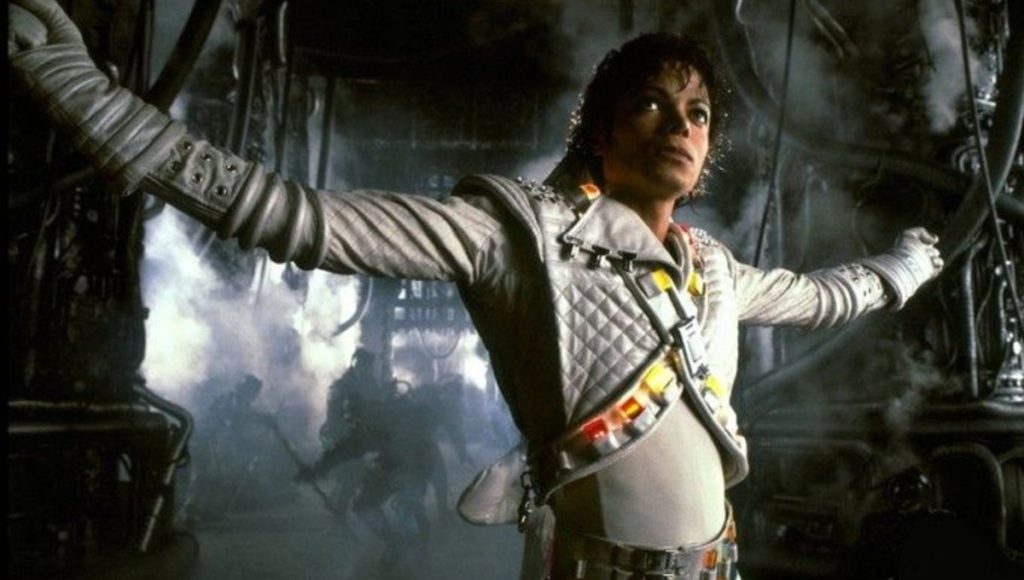
After the table reading of the script, Coppola decided to have the performers do an acting exercise to improvise a scene to help them bond. The puppeteers and actors were assigned the role of children at a summer camp. Coppola told them secretly that under no circumstances were they to mind Jackson.
Jackson was the camp counselor and Coppola told him that if he couldn’t get the children to behave that he would be fired. Huston was the owner of the camp and her secret was she wanted Jackson fired.
Hardin remembered that they enjoyed being disruptive children to Jackson’s continued frustration, but that everyone, including Jackson, was terrified when Huston entered the scene. At one point Huston grabbed Jackson by his shirt and lifted him 10 inches off the floor as she yelled at him that he was fired. Jackson kept his distance from her the rest of the filming.
James Horner, who had recently scored Disney’s Something Wicked This Way Comes (and decades later would score Titanic), provided the orchestral score for the film.
Jackson himself wrote the two songs featured in the film: “We Are Here to Change the World” and “Another Part of Me.” The latter song appeared on Jackson’s hugely successful Bad album (1987), but “We Are Here to Change the World” was not officially released until 2004 as part of “Michael Jackson: The Ultimate Collection.”
Pre-production on the project began in March 1985 with three weeks of principal photography scheduled once shooting started. The same big blue screen from Disney’s sci-fi film The Black Hole (1979) was used for filming the scene where Jackson danced out over the audience’s heads.
During filming, many celebrity friends of the people involved, primarily Jackson himself, visited, including actresses Kathleen Turner, Sophia Loren, Elizabeth Taylor (who delighted in tickling Jackson’s feet when he was strapped into a harness for a flying stunt and teased him that she should have been cast as the queen), singer Joni Mitchell, actor Warren Beatty and, one day, even the entire Jackson family. These visits slowed down filming considerably.
It was not surprising that this production, which was always in a state of constant flux, quickly ran over the budget. While Disney never confirmed the actual cost, it was reported that the 17-minute film ended up costing somewhere between $17 million and $30 million, or roughly more than $1 million a minute, making it at the time the most expensive film ever made. Its original budget had been $10 million.
Disney CEO Michael Eisner said: “Captain EO ran over budget. The biggest factor was special effects, some 150 of them, more per minute than Lucas had used in Star Wars.”
According to WDI final billing, but a figure never released to the public, Captain EO cost $23.7 million. That is how much money was transferred to the project code by the studio when all was said and done.
For accounting reasons, when WDI does a project, those charges are collected and transferred into a project code. The project is then “sold” to the park so it can be capitalized on favorable terms.
Why did it run almost $14 million over its original budget? Certainly, the talent and technology were expensive (although that was supposedly addressed in the original budget), but the real cause was that the project went into production without a firm story so things were constantly being changed every day.
A scene was filmed of the transformed queen “knighting” Captain EO with a sword before the ship crew left the planet and another with her troops holding spears over their heads as they approach EO earlier. Part of these segments briefly ended up in the Making of Captain EO documentary.
Other things were also filmed but not used, including shots of the spaceships that were completely finished, but that Lucas later decided he did not like them, so new space ships were designed, built and filmed.
In fact, Jackson would come in each day with different versions of the songs resulting in other things being rewritten. Captain EO was one of the first examples of a park project where “everybody had to approve everything,” whether they knew anything about that aspect of the project or not, and that ran into time and money.
So it was important that the Walt Disney Company got good value out of its increased investment.
At the time, George Lucas was working on the Star Tours attraction, which Eisner kept insisting be called Star Rides because he liked the word “ride” right up until the attraction opened.
Most people assumed that Star Tours was running behind schedule because of the technology and Lucas’ notorious need for perfection. It turns out that Star Tours was ready to go on time, but the opening was purposely delayed so as not to detract from Captain EO’s debut, which did not make Lucas happy.
Captain EO tells the story of Captain EO, the leader of a spaceship with a “ragtag crew” which included a dwarfish, clumsy, green elephant-like creature called Hooter, who plays musical notes through his flute-like trunk; a small, long-tailed, orange-haired flying creature called Fuzzball, sometimes described as a monkey with butterfly wings; two shaggy-haired, conjoined creatures known as the Geex (Idy and Ody), who served as navigator and pilot; and a silver, metal, officious robot security officer named Major Domo who had a smaller robot, Minor Domo, attached as a module to his back.
Commander Bog (a holographic head performed by the talented comedian Dick Shawn, whose scene was shot separately so he was never on the set) is displeased by the bungling of this group of misfits and gives them one final mission to redeem themselves.
They are to follow a “homing beacon” to a forbidding, dark industrial planet of sinister twisted metal and give a gift to the Supreme Leader (Angelica Huston). Since a hungry Hooter has mistakenly eaten the star maps with the necessary directions, this becomes a problem.
Crashing on the planet, the crew finds its way to the palace of this witch queen creature where they are captured by her army and threatened with torture for their unauthorized visit.
Captain EO agrees to the punishment and tells the queen that she is beautiful, but lacks a key to unlock her beauty. He tells her they have brought her a gift to allow this to happen and the queen asks for it.
His crew transforms themselves into a musical band. Before EO can share his magical song, however, Hooter stumbles into the equipment, rendering it momentarily useless and angering the queen, who orders her guards to capture EO and his crew.
A short battle ensues as Hooter repairs the equipment, and then EO’s song transforms the dark, stiff, mechanical inhabitants into agile and colorful backup dancers.
Defeating the queen’s Whip Warriors, EO turns her into a beautiful woman and her palace into a peaceful, vibrant Greek temple. The planet is transformed into a verdant paradise reminiscent of the work of artist Maxfield Parrish.
EO and his crew dance back to their ship and leave the planet as the inhabitants wave good-bye, grateful that the power of music, dance, and light had filled the planet with all the shades of the rainbow.
The finished footage was not as impressive as hoped. Jackson lacked a commanding presence as the lead character, Huston’s role had been trimmed severely during shooting, and the attempts at humor and urgency felt flat and forced. Even the staging of the 3-D effects seemed to pale in comparison to Kodak’s Magic Journeys that had previously run in the theater.
By this point, Coppola was already involved in his next film, Peggy Sue Got Married (1986), scheduled to open a month after Captain EO, and Lucas was struggling with Howard the Duck (1986), which would open one month before Captain EO, as well as facing challenges with his work on the Star Tours attraction and other aspects of his business.
Reportedly, scriptwriter Rusty Lemorande and Jackson did some re-shooting and re-cutting (at one point using a spray-painted ball cock from a toilet as a stand-in for the head of the Minor Domo puppet when the puppet couldn’t be found).
Several of Jackson’s hand gestures like his famous crotch grabs during his dancing that might be considered inappropriate to a general family audience were edited out in a variety of ways including zooming in to a close-up.
Cinematographer Peter Anderson said, “Michael had a propensity to do his crotch-grabs. It was kind of unheard of back then, and this was Disney. I was told to crop the upper torso or go for a tighter shot or something like that, [but] they were part of his routine. So it wasn’t like [he was only] occasionally doing it. It was on his beat. Disney started cutting [the film] together and saying, ‘Oh dear, oh dear’.”
There was even discussion to modulate Jackson’s speaking voice to a lower octave because it seemed too high or even have his speaking lines dubbed. However, no one wanted to broach that subject with the singer so the idea was dropped.
While there had been plans for Disney’s Imagineering to work on all the special effects (the talented Harrison Ellenshaw is listed in the credits), Lucas gave the film to Industrial Light and Magic to “fix,” and the subsequent delay in giving the film to Disney was blamed on Lucas’s notorious perfectionism. Basically, the 17-minute film was in post-production for nine months.
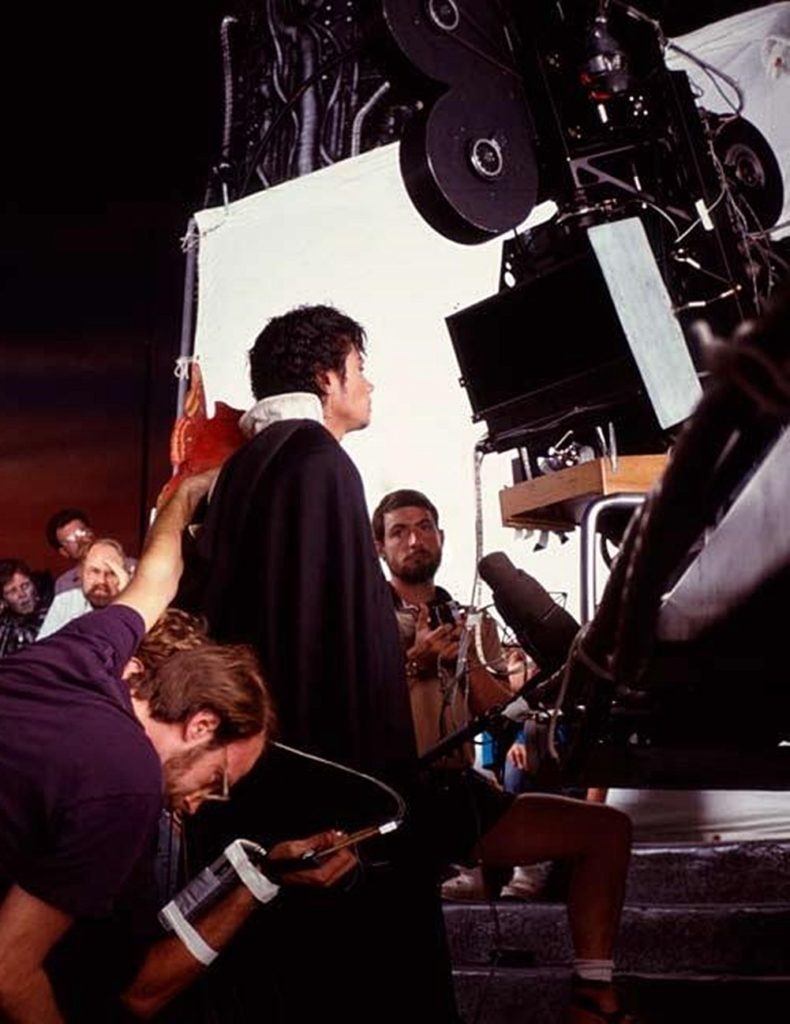
One Imagineer, who worked closely on the project, described the raw footage of the three weeks shooting as “a mess.” To make matters worse, there were three moments in the film where it was out of sync: two audio moments and one instance of 3-D. (Those problems, by the way, were not fixed when the film opened.) The last effects shot for Captain EO was the logo jutting out into the audience.
However, it could have been the worst film ever made and it would have made no difference, because it was done at the height of “Jackson Mania” and the opportunity to see Michael Jackson singing and dancing to two new songs he had composed guaranteed success.
Captain EO opened at Epcot on September 12, 1986, but the big premiere was scheduled for its Disneyland opening on September 18, 1986. The film would later open in Tokyo Disneyland in 1987 and Disneyland Paris in 1992.
Live theater special effects were added for Captain EO, including lasers, fiber-optic stars, and fog effects, all painstakingly synchronized with the action on the screen. So, officially, it was actually a 4-D experience because it incorporated actual in-theater effects synchronized to the 3-D film.
Frank Wells renegotiated Kodak’s contract, with Kodak agreeing to pick up some of the film’s production costs, build a new theater at Disneyland, and renovate Epcot’s 3-D Theater to accommodate the special effects for Captain EO.
The week of the grand opening, the National Enquirer printed the infamous photo of Jackson lying inside a hyperbaric chamber. It was theorized that, in order to live to be 150 years old, he slept in it each night to get an influx of oxygen.
In reality, several biographies of Jackson pointed out that Jackson himself leaked the picture purposely at that time to draw attention to the premiere of Captain EO, especially with its “sci-fi” aspect. However, when it drew such negative attention, Jackson decided not to attend the premiere.
More than 200 members of the international press attended the Disneyland premiere and were herded into the Tomorrowland Space Place eatery, where they were given a press kit containing nine separate releases, six photos, and a commemorative Captain EO T-shirt.
Surrounded by free coffee, soft drinks, and croissants, the press could watch a trailer about the making of the film on an endless loop.
The big parade of celebrities began around 2 p.m. Over 100 celebrities attended the grand opening of Captain EO at Disneyland, where they were chauffeured down Main Street to a cheering crowd. There were so many celebrities—from Jack Nicholson to John Ritter to Annette Funicello—that the parade did not end until 90 minutes later.
By 5 p.m., the rising heat had made things uncomfortable, and the children brought by their celebrity parents were beginning to tire and become cranky, but it was still not time to see the film.
Jack Wagner introduced the Pine Bluff High School and Washington High School Marching Bands, and also Gregg Burge, from A Chorus Line, who some speculated had been chosen because he was a young male African-American with a singing and dancing background to perhaps represent the absent Michael Jackson.
Burge burst into an original Disney song about “Let’s make way for tomorrow!”, followed by a float featuring costumed character versions of Hooter, the Geex, and Major Domo.
At the end, Eisner smiled and addressed the crowd: “Michael Jackson is here!” The crowd got very excited but Eisner continued, “But he is disguised, either as an old lady (something Jackson had actually done once to meet with the Imagineers), an usher, or an Animatronics character.”
Nobody in the audience, especially the journalists, believed Eisner. While there is still debate whether Michael Jackson showed up for the official premiere (though his mother and two sisters did attend), he did indeed pop in to watch the “test” shows at Disneyland.
Since he had taken to wearing a surgical mask, he was easy to spot by guests. When that became an issue, Jackson sought sanctuary in the projection booth to watch the film and the reactions from the audience.
After a speech by Kodak’s vice chairman, Coppola, Lucas, and Anjelica Huston gathered at a red ribbon drawn across the entrance to the theater. Nearby were Coppola’s nephew actor Nicholas Cage and the newest Jackson superstar, Janet.
Reading from cue cards, they proclaimed:
Huston: “For all those who still believe in the magic world of fantasy and imagination…”
Lucas: “For all those who are still moved by the wonders of music and dance…”
Coppola: “For all those who share Walt Disney’s dream and delight in the promise of the future, we cut this ribbon signifying the opening of the 3-D musical motion picture space adventure, Captain EO!”
Animation historian and film critic Charles Solomon, reviewing the film in the Los Angeles Times, October 9, 1986 echoed the feelings of many people when he wrote:
“For all its wondrous imagery, Captain EO is nothing more than the most elaborate rock video in history; like a hollow chocolate Easter bunny, it’s a glorious surface over a void…given that list of credits and the film’s lavish budget, audiences have a right to expect more than empty flash.”
As expected, the show opened to long lines of eager guests. One Disney survey showed that 93 percent of Disneyland guests listed seeing Captain EO as the primary reason for coming to the park those first few months. At the earliest screenings, the audience would repeatedly break out in applause several times.
A special 30 page 3-D comic book adaptation of the film’s story written and drawn by Tom Yeates was produced in 1987 by Eclipse Comics. A special tabloid version was available for sale at the Disney parks along with other merchandise from plush characters to keychains to T-shirts.
Over time, the film attracted fewer and fewer new guests, less and less repeat attendance.
One of the things Lucas learned from the experience was that he should probably do theme park projects on his own. He told Rothschild just before the opening, “We had no idea what we were getting into.”
To assemble a team for a possible theme park, Lucas made very attractive offers to some of the Imagineers. Most of these Imagineers could not accept the offer, because Frank Wells had recently instituted the practice of doing contracts for members of the WDI team and there was a “no-compete” clause for the length of the contract if anyone decided to bail out of their contract early.
Captain EO closed quietly and without fanfare at Disneyland in April 1997. It had already closed in July 1994 at Epcot and in September 1996 at Tokyo Disneyland. It lasted until August 1998 at Disneyland Paris.
With the tragic death of Michael Jackson on June 25, 2009, there was renewed sentimental interest in Jackson and his music and Disney was receiving pleas to bring back Captain EO. At first, CEO Robert Iger insisted Disney would not bring the film back but Disney also noticed that the 3-D attractions playing at their parks were experiencing lower attendance.
So supposedly for just an “exclusive limited engagement,” it was decided to return Captain EO to the parks.
It was called Captain EO Tribute to distinguish it from the original, since many of the original 4-D effects including the fiber-optic star field, smoke and lasers had been removed from the Disney parks theaters worldwide when the attraction had closed and changed over to another show.
A new 70mm print of the film was produced for the attraction from the Interpositive Blowup made in the 1980s and the sound was enhanced. Sometime in 2013, Disney made a 4K Scan and Digital 6 track Restoration of Captain EO because of the brittleness of the existing print and projectors.
Before the show, an announcement proclaimed: “Almost 25 years ago, the power of music, dance, and imagination came together to create an amazing, out-of-this-world adventure. Now, Captain EO is back to change the world again.”
The attraction reopened at Disneyland on February 23, 2010; Disneyland Park Paris on June 12, 2010; Tokyo Disneyland on July 1, 2010; and Epcot on July 2, 2010. Kodak briefly sponsored the revival for about a year.
Despite being a “limited engagement”, the show lasted for another four to five years because it was less expensive to keep it running than replace it. The attraction closed at Tokyo Disneyland on December 19, 2013; Disneyland June 18, 2014; Disneyland Park Paris on April 12, 2015; and Epcot on December 6, 2015.
One of the reasons the film has not been officially available on video or DVD is because the original contracts required that the performers would have to be paid additional compensation for any showing outside of a Disney theme park. In addition, rights would have to be renegotiated with the Michael Jackson Estate.
The film did air once, and only once, in a 2-D format on MTV in the early 1990s as part of a tribute to Michael Jackson. Bootleg versions of the film, like ones of the film Song of the South, are readily available with a little looking.
Captain EO was a 3-D movie with new songs by the most popular singer of the time and it could only be seen at a Disney theme park. It was an event.
The character of Captain EO wanted to change the world. The attraction Captain EO changed entertainment at the Disney theme parks and remains a sentimental favorite for many Disney fans.
SOURCE: MousePlanet


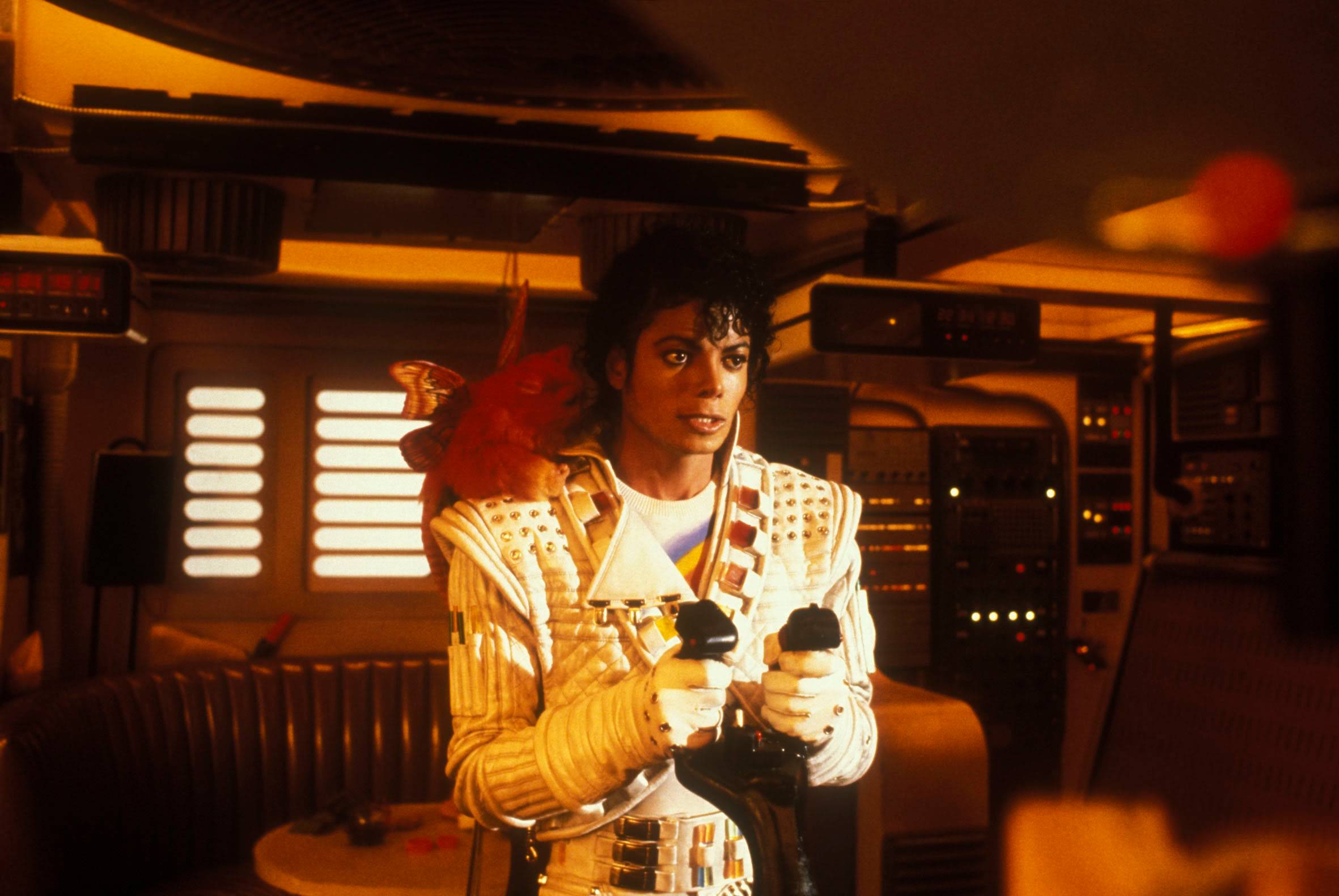


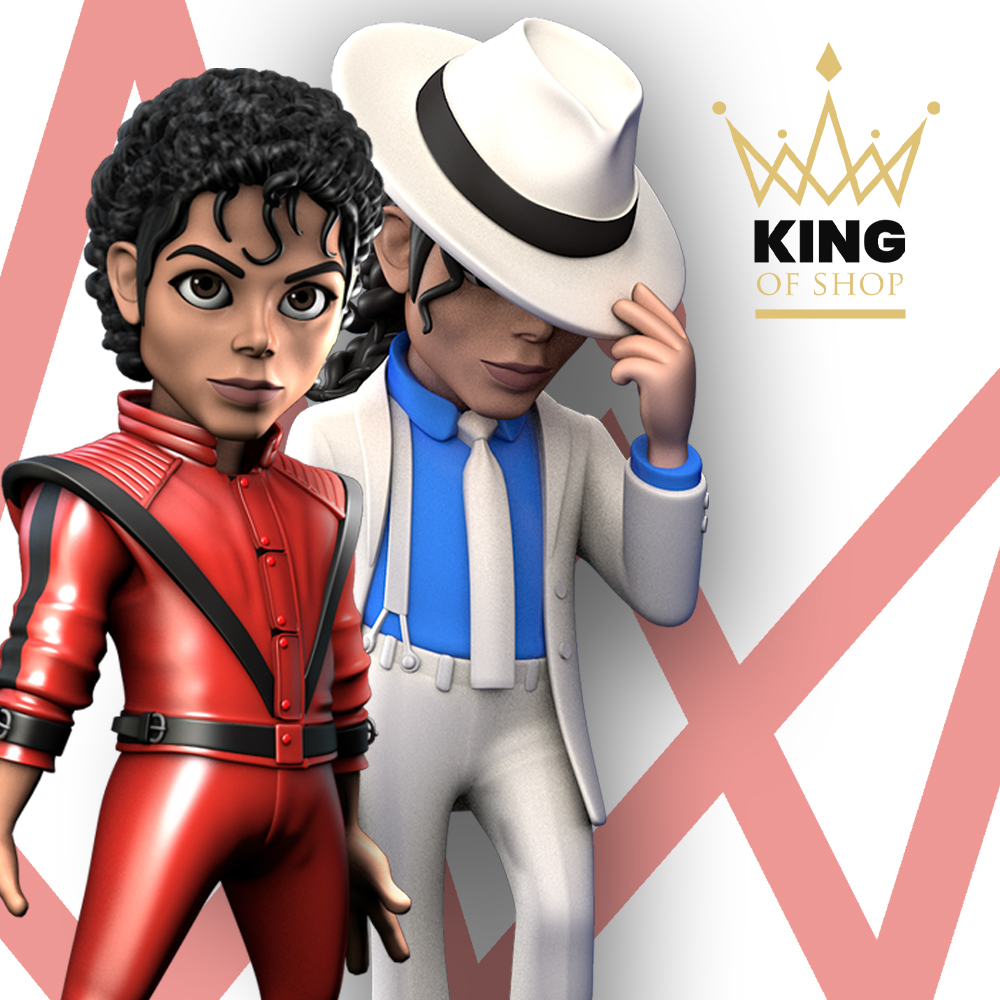
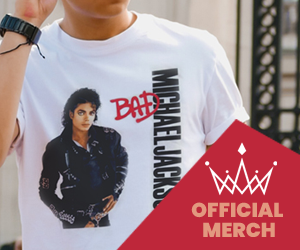
This is probably the most comprehensive piece I have read on Captain Eo, a film which I first saw in the late 80s at Disneyland in California, and which, after its re-release as a tribute to Michael, I saw in Disneyland Paris, California, Japan and Walt Disney World (where it was located in Epcot). So, with the exception of California, this little Disney film starring Michael Jackson literally took me around the world over a period of several years, until I’d seen it in every park it had been screen. To paraphrase Michael in “This Is It” it was an adventure, a great adventure. And I’d happily do it all over again.
This did not air on MTV as a tribute in the early 1990’s. It aired during the week of the release of “HIStory: Past, Present, And Future – BOOK I” in the summer of 1995 when the teaser trailer for that was released (premiered on television), the premier (again premiered on television) of “Scream” was released, and Michael did his interview on the U.S. television channel “ABC” (and who knows what other channels outside of the country since I understand it (the interview an premiers of the two other “short promotional films”) did premier and was aired worldwide) with Diane Sawyer.